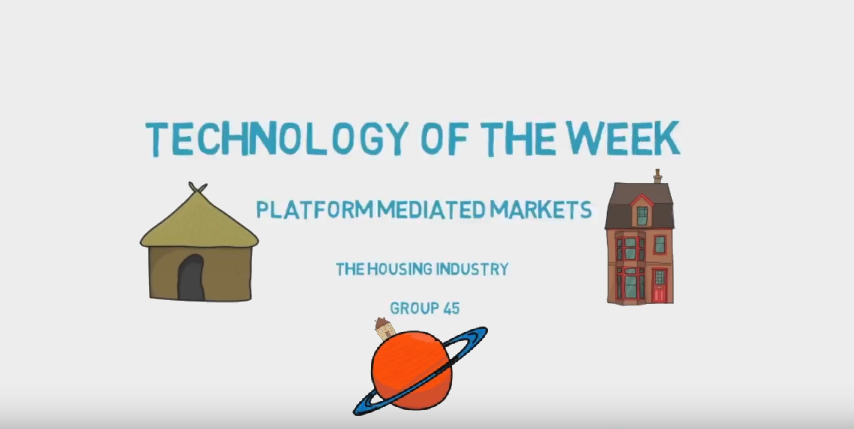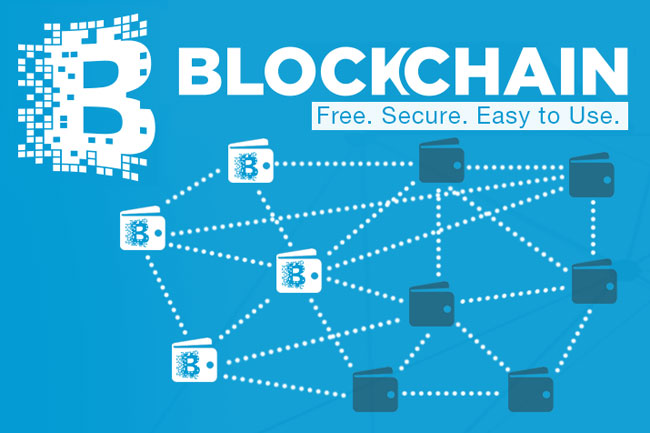The video below describes how online platforms revolutionized the housing industry and the way in which house owners, house buyers, and tenants connect with each other in the Dutch housing market:
Group 45: Rosanne Baars, 406184 ; Roy Ouwerkerk, 459406 ; Yuxin Sun, 406080 ; Pieter Vreke, 372189
1. History
The first real estate brokers in the Netherlands arose in 1284. They acted as the connecting party between trading partners. They earned money from commissions. In the home-rental industry, homeowners initially connected with tenants via physical notes in public spaces. In the 19th century housing corporations and social housing emerged. Consequently, private homeowners struggled to find tenants and started using the intervention of brokers, who received a fee for every contract signed (Van den Elzen, 2013).
2. Current Situation
Decades later, the rise of two-sided online brokerage platforms completely changed the way in which homeowners and tenants communicate. The emergence of these platforms weakened the role of offline brokers, which has several benefits:
- For online brokerage platforms, the physical infrastructure and assets that offline brokers use is no longer needed.
- Building and scaling networks became cheaper.
- Homeowners have access to a larger customer base.
- Tenants have access to a larger number of houses and it is easier for them to compare, due to more transparency.
- Transaction costs decreased, since most of the physical communication is replaced by online communication.
These eventually led to a decrease in effort and time needed for the rental process. However, for the process of buying/selling a house, offline brokers still coexisted along with online platforms, because buying a house has a large impact on people’s lives, which increases one’s willingness to pay (Bloomberg, 2013).
3. Platform Properties
Current housing platforms have several properties:
- A triangular structure, composed of four parties:
Demand side users: Tenants or buyers
Supply side users: Homeowners
Platform providers: Online platforms/communities
Platform sponsors: Technology providers
Platform providers and platform sponsors are mostly employees the same company
(Eisenmann, Parker, & van Alstyne, 2009) - Strong cross-side network effects. A large number of house-owners offering houses on a website attracts tenants, and vice versa.
- Subsidies for either the demand or supply side of the platform, while charging the other side. In this way, more users are attracted and network effects increase. The reason why the same part of the platform is not charged consistently, is that different platforms target different niches with different willingness to pay.
- Interoperability; many platforms redirect demand side users to related platforms.
- Targeting of niches, who have needs for different features.
- Low homing costs. Subscription fees are reasonably priced and currently reducing.
4. Future Expectations
Housing platforms are expected to change in the following way:
- The number of housing platforms is expected to keep increasing due to existence of niches and low homing costs niches exist and homing costs are low. At the same time, population growth, internationalization and increasing transparency may lead to an increase in housing rental as opposed to buying property (Independent, 2016).
- Platform’s profit margins may increase, since increasing demand and decreasing supply for housing rental might lead to increased willingness to pay of demand side users (De Volkskrant, 2014). However, increasing competition among platforms might drive margins down. These two effects can eventually cancel each other out.
- Smart-home devices will increase efficiency for both landlords and tenants (Independent, 2016). This will make property management easier, since it might eliminate physical communication and provides more information.
- Increasing use of big data analytics. For example, Housing Anywhere is experimenting with this. (Statsbot, 2017).
- Convergence of the house rental and real estate industries, because house buyers might get more comfortable with online approaches (Harvard Business Review, 2016).
- Companies from adjacent markets may envelop incumbents.
References
Bloomberg. (2013, March 8). Why Redfin, Zillow, and Trulia Haven’t Killed Off Real Estate Brokers. Retrieved from Bloomberg.com: https://www.bloomberg.com/news/articles/2013-03-07/why-redfin-zillow-and-trulia-havent-killed-off-real-estate-brokers
De Volkskrant. (2014, November 2014). De kloof met de Randstad is niet meer te dichten. Retrieved from De Volkskrant: https://www.volkskrant.nl/binnenland/de-kloof-met-de-randstad-is-niet-meer-te-dichten~a3780161
Eisenmann, T., Parker, G., & van Alstyne, M.W. (2009). Opening Platforms: How, When and Why? Platforms, Markets and Innovation, Gawer, A. (ed.), Northampton, MA: Edward Elgar, 131-162.
Harvard Business Review. (2016, November 17). Real (estate) disruption: how technology may change the housing market. Retrieved from Harvard Business Review: https://rctom.hbs.org/submission/real-estate-disruption-how-technology-may-change-the-housing-market/
Independent. (2016, August 10). How technology could revolutionise the future of renting. Retrieved from Independent: http://www.independent.co.uk/money/how-technology-could-revolutionise-the-future-of-renting-smart-meter-landlord-bills-a7182306.html)
Rabobank. (2017). Rental housing: Rising prices in a high-potential market. Retrieved from Rabobank: https://www.rabobank.nl/bedrijven/cijfers-en-trends/vastgoed/real-estate-report-2017/sub-markets/rental-housing
Statsbot. (2017). Housing Anywhere discovered the best way to share data across a team and help them stay on track with key metrics. Retrieved from Statsbot: https://statsbot.co/customers/housinganywhere
Van den Elzen, W. (2013). The future of the Dutch housing corporations.




